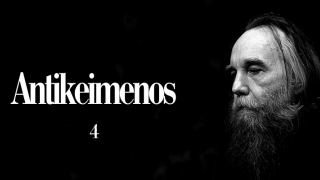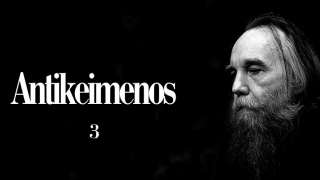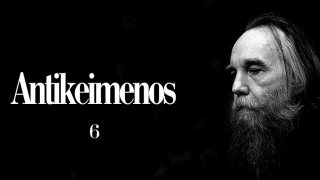Carnal Monotheism
The London Telegraph recently reported that in the UK dogs are increasingly subject to wild slaughtering – a disgrace that calls for a re-evaluation of animal sacrifices in a ritualized context. The main function of rituals always has been to establish common limits which are then to be respected. In any religious context only a selected and well defined kind and number of animals can be slaughtered for human consumption. Any arbitrary or wild slaughtering of animals is considered as barbarism. Since dogs are pets they are subject to special protections. With this in mind the idea of resuming some form of animal sacrifice in a rebuilt Temple in Jerusalem is less outlandish than it might appear.
At least it would be a very powerful force of De-secularization which is well underway globally. It would also be more than welcome if it could help ending the tyranny of fiction or virtual reality and healing the ruptures brought about by the digital era. These ruptures are a result of Protestant metaphysics or internalized Christ as a virtual god confusing transcendent identity. Protestant metaphysic are a form of Hellenization. They have rendered human action into immaterialness and also conjured up carnal phobias and veganism. Not only did nature become virtual in the gender world but the deed was split into digital algorithms. In other words the Lutheran ban on the charitable deed has extracted a huge price by derailing our human sense of reality.
As a result there has rarely been a time when the gap open wider between knowledge of the good life on the one hand and the incapability to comply with on the other. Evidence for this is the obesity epidemic as just one of many addictions. The psychic disconnect points to the overwhelming power of virtual reality for ordinary humans. By producing lots of fake action the digital world produces its own miracles and make believe. Problem is that all this devalues or the extremely useful role of the deed as the only vehicle for the verification of promises. The firm bracket between the word that implies a promise and the verifying deed was once enshrined and daily rehearsed in religious rituals such as the Temple offerings of animals.
The modern sentimentalization of animal sacrifice began with the romantic anti-vivisectionist revolt which strangely followed the human slaughtering of the French Revolution. The latter is rightly deemed as the last act of the Protestant Reformation. It is for this reason that animal worship moved center stage in vegan Hitler‘s Nazi revolution. Not for nothing did the Third Reich take great pride in its animal protection laws, sensibility towards nature and anti-smoking policies. All this had been anticipated in the biblical divide between antediluvian vegetarianism and postdiluvian animal sacrifice which also marks the transition from shame to guilt culture. The Rabbis understood this very well as Shai Secunda tells us in his review of „Blood for Thought: The Reinvention of Sacrifice in Early Rabbinic Literature“ by Mira Balberg (University of California Press: 2018). Animal sacrifice seems to be the crown of all religious rituals, introduced in the Bible on the occasion of the first Brit Mila by Abraham himself. It created an almost unbreakable „inner tie“ between word and deed. It is also a major feature of Jewish monotheism rightly understood as the transcendence of Greek divination by the Delphic oracle: instead of expecting passive fate governed by the oracle we see in Rabbinic Judaism the active shaping of the future through faith. Hence keeping ones word is the basic law of Judaism. The key term is „bereshit“ (beginning and concealment or eclipsing vision) connects Abraham’s circumcision with God‘s creation of the world. It is the first word of the Torah and the concealment relates to the ascent from the visual to the auditive paradigm taking center stage with Judaism.
In Abraham’s dream God seems to share his guilt concerning the sacrifice of animals. In the dream the divine fire consumes the animal bodies perhaps symbolizing the consumption of visual reality and ushering in the auditive reality of the promised word. The sacrificial symbolism of entrails being God‘s portion and the rest being for man by revealing the distinction between inner and outer perspective, tells us how the divine being takes care of our raw appetites. Yet by leaving the innermost parts of the animal for God conveys a metaphor for the internalization of shame and its transformation into guilt feelings. This is the birth of the notion that shared guilt is being diminished but only if it is accompanied by personal responsibility. In Edgar Allen Poe’s novels the thief or the murderer always seeks protection in the crowd and the detective has to uncover or identify him and prove his guilt. This also means that we ought to preserve the most cherished parts of the sacrificial animal for the divine representing the common good. In the Temple ritual sacrificial blood was famously sprinkled on the Altar and the Holy of Holies. Why is that so? We know already that in kosher slaughter the animal has to be left bleeding out, which is the equivalent of releasing its soul into the outside world. Even the Greeks saw the blood as carrier of the emotions or soul with their teaching of four „humors“, fluids representing four different temperaments: sanguine, melancholic, choleric and apathetic.
Another indication for the extraordinary role of animal sacrifice in the history of the Jews comes from Lithuania. We learn this from Shai Secunda who points to the supreme importance of animal sacrifice for the emergence of the so called Lithuanian analytical school. Not least thanks to the outstanding influence of the Soloveitchick dynasty on modern Orthodox Judaism dominating the Anglosphere today. Secunda tells us that it was the Lithuanian born Israeli Supreme Court judge Moshe Zilberg who examined the outstanding intellectual performance of the lamdanim with their equally seminal and abstract discourse about sacrifice. Little wonder then that ever since antiquity the Jews materialized the soul in the blood and sacred rituals were called „works of blood“ done by the priests.
It is for this reason that halal and kosher rituals do dispose of animal souls in order to maintain the sacrificial order of monotheism. This is why Shai speaks of animal sacrifice as the essential „cultural paradigm“ of Rabbinic Judaism. In other words the Rabbinic sacrifice has preserved the original “carnal election” of the Jews. What this means is that there is meat in any action which lives on in the Jewish concept of oath and promise “made true” - the litmus test of Jewish guilt culture. Its crucial test is “keeping ones word”: even in the synagogue the ritual remains an exercise in sincerity or “tying the word to the deed”. Shai Secunda reminds us of a central halakhic value which is communicated by „fulfilling mitzwot fastidiously“. This is what Ecclesiastes called „the sum of Man“. It has survived in the West as „One Man one Word“.
Protestant or Jewish Sacrifice?
Today we are living in times of inflationary claims on “victimhood” which connotes being sacrificed by others - to the point where this is turned into the political glue of “intersectionality”. But here guilt is being reduced into shame or Jewish hope for messianic times is shortchanged into Christian fulfillment. If the world is not perfect Jews and Orthodox Christians tend to blame themselves just like adults whereas Protestants will shame the “other” like children. While the Jewish sacrifice in the Temple used to be “carnal”, its enlightened yet for a while more successful Protestant franchise is more “spiritual”. If you think, though, therefore the latter must be closer to the divine being than the former you would be mistaken.
This was my I take home message after a week of Talmud study (Pikei Avot) in the hottest days of July in New York City. A major issue of the seminary was the reading of chapters of Michael Wyschogrod’s book “The Body of Faith” (1983). It deals with correcting the “evangelization of Judaism” meaning reducing congregational ritual into personal ethics or even medicalizing it as was the case in medieval times with Maimonides who loathed rituals. The speaker of the seminary, Rabbi Meir Soloveichick, confessed to have been strongly influenced by Wyschogrod mainly because he insisted on the “carnal election” of the Jewish people. From there emerges the understanding of mitzwot (commandments) as congregational sacrifices or “deeds” that constituted the main form of worship.
By contrast the Protestant sacrifice became known first in Latin as “sacrificium intellectus” at the time of the Reformation, so much so, that Leo Strauss argued in his book on Spinoza that regardless whether informed by Luther, Zwingli or Calvin, the Reformation was not only tilted against ritual but had also an anti-intellectual bent. During my Talmud seminary, the only occasion when Rabbi Soloveichick for a blink of the eye seemed to loose his perfect countenance was when he spoke of vegans, if I remember that right. At this junction the story of vegan Cain slaying carnivore Abel came to mind as one of the inspirations of Rabbinic Judaism. The story certainly lends support to the concept of “carnal election” of the chosen people – particularly after the antediluvian generations had failed. Rabbinic orthodoxy fostered Jewish realism even in the absence of bloody sacrifices and saved athentic monotheism after the destruction of the second Temple.
The Rabbis of Yavneh, namely Jochanan ben Zakkai, one of Soloveichicks favorites, accomplished this by substituting the ritualized sacrifice of pure animals in the Temple with regular prayers in the synagogue implying the sacrifice of the “inner animal” meaning instincts as reflected in the individual will. A semblance of this also preceded the Reformation: visualized as St Michael or St. George harpooning a mortified human body or the symbolic dragon which in turn inspired the secular version of Captain Ahab piercing Moby Dick. In Rabbinic Judaism this became known as the submission of the human will to divine ordinances or law. Yet today we speak of sublimation independent of ritual.
The Christian proxy version of this became the re-visualized sacrifice of the Jewish family man Jesus who would then be idealized as universal Christ by St Paul. Long before in the Akeda, i.e. Abraham’s non-sacrifice of Isaac, Judaism had transcended the sacrifice of humans known in antiquity as infanticide or more often filicide and practiced widely all over the Middle East. Judaism kept to the divine command “be fruitful and propagate” realized in the particularistic institution of vertical (monogamous) marriage and family. By contrast Christians relied on horizontal mass baptism by aiming at an “international movement” (Soloveichick). Its was based on individualism and proxy salvation through the sacrifice of god’s son, if only symbolically. Thus global Catholicism, but not regional Orthodoxy, suspends the particularistic moorings of the family and personal God but also the tight bracket between word and deed through sanctifying commandments. Sacrifices either virtual or real are crucial for this. Judaism and Orthodoxy are ascending faiths while Catholicism and Protestantism are descending by clinging to the universal Pauline doctrines.
From this source eventually emerged the rejection of any sacrificial order by vegan advocacy with calls for banning ritual slaughtering all over Europe. It also takes the form of censoring of the mind. This has to do with an emphasis on individualistic and cognitive attitudes against the orthodox reliance on communal ritual and deed. This is at the heart of the present conflict between liberal elites in the West and the new populist conservatives with the latter demanding faithfullness and deed rather the pseudo-unity by PC.
At the same time we see forms of self-sacrifice or Protestant “flagellation” which deeds the increase in medical conditions of dependency such as anorexia – a form of gradually sacrificing one’s own body. This represents an intensification of self-harm with Catholics and Protestants which has been first observed as a gap of suicide rates by Emile Durkheim. The flip side of vegetarianism is the worshiping of animals – very popular in ancient Babylon as among the Nazis with vegan Hitler adoring his German shepherds. This has been in the making over five hundred years of Reformation. Without abolishing the sacrificial “charitable” deed, based on the Rabbinical tradition of the sacrifice of individual will, Luther would have been unable to hand over Christian conscience to the suzerain. This was the regional power broker who created the rationale of cuius regio eius religio.
During the Tikvah seminary we learned that Wyschogrod took issue with Maimonides’ hostility toward ritual and his penchant for replacing it with rationalism cum ethics- a shift from action to cognition taken up by Luther. Just as the Reformation depended on Maimonides so did Thomas Aquinas and Duns Scotus and hence Heidegger and modern feminism all of which are united in their rejection of form and ritual. By contrast Christian, Muslim and Jewish Orthodoxies are united in sacrificial arrangements such as priestly marriage and the rejection of celibacy. Orientals share the broader message of “carnal” monotheism with Judaism in contrast to Western Christianity. Rabbi Soloveichick also elaborated on parental erudition and authority which has been lost in Western academia. Yet emerging at the Javneh community in the first century C.E. the concept of sages served as the pivot of oral transmittance of revealed Torah. Each sage was to raise five disciples just as Jochanan ben Zakkai did. From here later emerged the crucial role of pious parents for the continuity of Judaism.
Which brings me to some of Rabbi Soloveichicks corrections as for instance regarding “progressive” first century sage Hillel whose thinking has been instrumentalized by liberals. They simply took his messages “out of context” by turning it into universal maxims “untied” from deed and local congregation. Now “context” is just another word for Jewish particularism which is rooted in the family, a matter pretty close to “carnal election”. Hillel famously asked “If I am not for myself who is for me?” - which liberals like to quote without its second part: “But if I am only for myself, who am I.” This alludes to our limited intelligence as individuals which can be enhanced rather than by “Artificial Intelligence” through the “wisdom of crowds” namely our ancestors. Regarding human intelligence, properly understood, we are only hosts, literally vessels, to be filled with transmitted “Mesorah” - informing us how the world actually works.
Unlike Nietzsche’s neurotic intellectual overreach and pagan rejectionism, moderns are supposed to absorb the wisdom of the past. This makes the greatest accomplishment in Jewish post-Holocaust learning not “creativity” but “repetition and deed” giving us eventually the Orthodox revival. Towards the end of the 19th century the famous anthropological controversy over “myth versus ritual” was won by professors Robertson-Smith and James Frazer who sided with ritual against Freud and others siding with myth. This coincided with the birth of cultural Protestantism. Freud’s close attention toward myth soon became mainstream in the US - unlike Anglican Britain once home to the Oxford Movement of Cardinal Newman. This explains why Brittish-Jewish diaspora leans to conservatism while the American is majoritarian progressive. Yet this is about to change with American Jewry is about to turn conservative - a lesson taught to them by none less than President Donald Trump who in his plain talk is also close to Orthodoxy when it comes to “acting on promises”. With Jacob Rees-Mogg we are seeing a Catholic headed to become the next Prime Minister of Britain. We are also seeing the return to Catholic rituals within the US evangelical dispensations and increasing Jewish-Christian dialogue.
Post script: I had my “Chinese” experience, so to speak, in New York when my host “West side YMCA” denied me web access based on Political Correctness. On my last day there its membership network would not allow me to read on line a lead article in The American Conservative. The piece titled “The Bad and the Beautiful” is actually brilliant even if targeting predatory artists. I suppose this censorship happened on behalf of the pedophile community because the TAC may have been at times too critical of their agenda. Anyway this is what came up on my screen:










